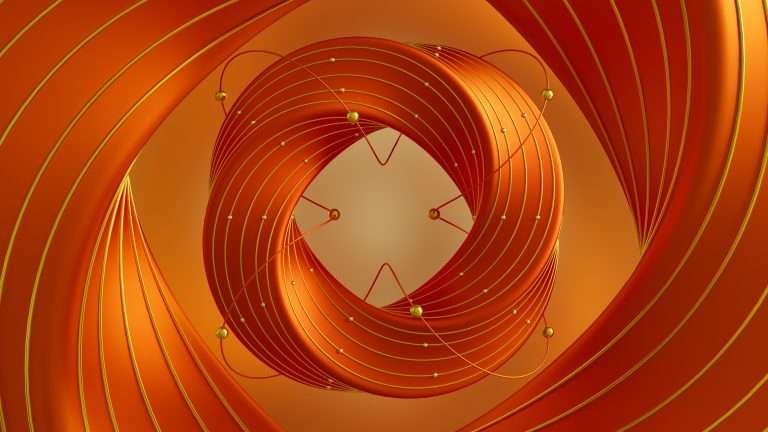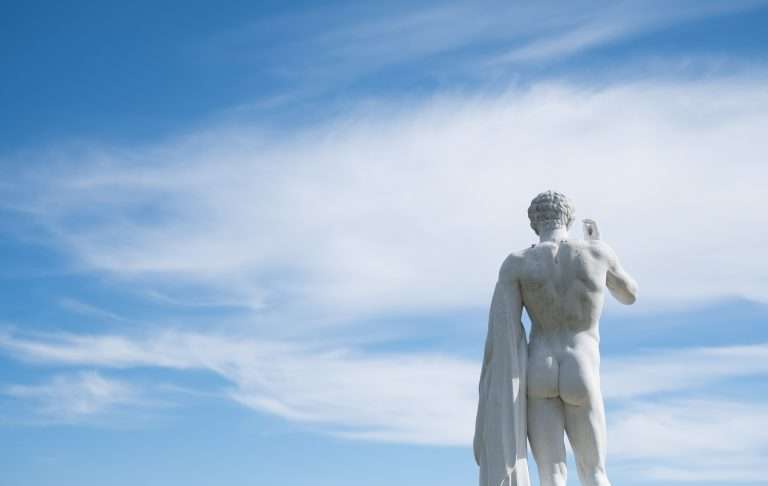In an attempt to demystify the creative process and make it more available to everyone, it seems to me that we stripped all the juice out of it. It’s commodified.
This is especially true in the creator economy, where people need to spit out content like a tennis ball machine. Their livelihood depends on it, after all. It’s all fine and dandy to be able to create at your own pace and not worry about money, but rent doesn’t pay itself.
So naturally, a whole industry teaching aspiring creators how to monetize their craft has emerged. There’s now guides and courses on how to be a prolific creator that teach you all the steps you need to take. All the particularities of a creative endeavor have been deconstructed, put into separate jars and neatly labeled.
This is how you write good headlines, this is the perfect template for your essay/video,this is how you market your content, and so on.
What I’ve been interested in is finding the leitmotifs that are universal, transcending time and discipline.
I’ve been lucky enough to witness the behind the scenes of a (prolific and known) painter about 15 years ago, when the rules of the game were different. So if something has stood the test of time, it means it’s an integral part of creating.
I’ll share what I learned about the creative process and the overarching theme that ties everything together.
(Spoiler: it’s chaos, both literally and figuratively.)
A Painter’s Studio
Art is chaos taking shape. (Pablo Picasso)

My childhood home was across the street from a painter’s studio.
I’ll call him Connor. Since he knew my family and I was pretty decent at drawing, he invited me to spend time with him at his studio during summer holidays. He taught me about light and shadows, how to use proportions and visualize objects in space. He introduced me to different techniques and I still have some of the drawings I made back then.
My studio has a personality of its own. It can be a monstrous clutter from one end to the other or, at times, the very model of simplicity. (Harley Brown)
Let me give you a tour of his studio. The place was a mess. Everything happened in a single room. Every inch of wall was covered with his paintings. Some were leaning against the wall, back towards the room. Connor explained that he wants to take a break from looking at some of his creations so he can return to them with fresh eyes. It helps to notice any imbalances in color or composition.
Looking around, you’d find an easel displaying his unfinished work, tables burdened by the weight of art books, piles of sketches, misplaced brushes and paint tubes, and a few odd chairs. Not to mention the many unfinished paintings, scattered throughout the room.
A productivity geek would probably have a heart attack there.
Looking back, I can see the creative life with different eyes. I can deduce his attitude, thinking process and his values.
The creative process was idealized and romaticized too much. Sure, there are some unspoken rules that can make it a bit easier, but at the end of the day, all that matters is taking words, images or materials and turning them into something new.
So here are the core lessons I got from observing Connor.
1) The Creative Process is Messy
Order, especially in a creative endeavor, is a recipe for mediocrity. Think of clutter as the fertile ground where ideas germinate and develop. All innovation springs out of chaos and uncertainty. So embrace the messiness of life. Stop trying to eliminate friction and learn to work with it.
Work is not linear. A doesn’t necessarily lead to B. Not every idea ends up where we thought it was going to go. This can happen with articles, illustrations or videos (to name a few). We start with a premise, but are taken in a different direction. Things unfold unexpectedly. As writers, we may not know what we’re trying to say until fingers hit the keyboard.
2) Don’t Rush
No self-imposed deadlines, it took as long as it took. (Of course, sometimes deadlines are unavoidable.)
Let ideas ripen: I know we’ve seen everywhere the advice to be prolific and churn out content everyday, but there’s a trap here. Yes, you need those reps. You need to exercise your creative muscles in order to gain momentum. What this strategy seems to be missing is that some projects need time to mature.
If you force yourself to make a video daily for example, you can’t possibly have time to allow for contemplation, exploration, experimentation or other activity that would deepen the content. Unless you’re already familiar with the subject of the video, you’re most likely only going to scratch the surface of what you could have said had you spent more time on it.
A gardener doesn’t plant a tomato, waits for the vine to grow, and only then proceeds to plant his next vegetable. So don’t rush to hit Publish. Wait for the idea to reach maturity. Some of my articles take weeks to go from idea to published-end-product. (This is one of them.)
Work on multiple projects at once. This is also beneficial because sometimes we need to distance ourselves from our work in order to come back with a fresh perspective. Connor didn’t limit himself to only one project at a time. Neither should you.
3) Optimize for Serendipity
Be deliberately messy. Store things where they don’t belong. Design a setting that can surprise you. It can be either physical (the room where you work) or digital, since many don’t create physical products.
I know all the neat freaks are going to reject this idea, but orderly thinking and clear-cut formulas aren’t the most conductive to ingenuity. By creating an environment of high entropy, creators can get an unfair advantage over everyone else who is playing it “safe.”

Look for ideas in the most unusual places. Forgotten books, foreign magazines, old movies. By consuming the same content as everyone else, you’ll end up seeing the world exactly the same.
A theory of creativity
The Role of Entropy, Friction, Noise
My thesis is that a random, slightly disorganized environment can bring about original results.
By being exposed to irregular patterns, we’ll improve our ability to detect the “real” patterns.

The image above depicts 3 stages of entropy simulated with coffee: (from left to right) low, medium, high. The low entropy glass is a good visualization for when our ideas are scattered and no connections have been made between them. The glass on the right represents total uniformity, which could mean one unified theory, but it doesn’t lend itself to much output, the work is already done. The sweet spot is in the middle. When your thoughts are taking shape and ideas are battling with one another.
One of the best ways to nudge our brain to make new connections and generate ideas is to offer an incentive for it. No adaptation without stimulus. It’s the golden rule of sports, or any change in the body.
We can apply this idea to our information processing. Our thinking patterns are usually habitual and instinctive. Your brain thinks “If it’s worked before, let’s use it again.”
By introducing noise, we increase variation in our information processing, prompting our brain to come up with solutions, to get better. When you increase the variation of stimulus (any type of data), you get more awareness of what’s invariant, which leads to insights and connections.
For example, if you’re writing an article, it’s useful to draw from a wide range of research and ideas, because you’ll be better able to see patterns in the data. This way, you’ll only extract the relevant points. If the sample size was too small, you may have arrived at unwarranted conclusions.
It may also be the case that after introducing this much noise, everything is a mess and you can’t make sense of anything. But this, again, is an opportunity for growth.
If things don’t make sense, if you can’t make progress, if you’re stuck, this is precisely the place where magical things happen, if only you start exploring that situation.
Don’t try to eliminate friction, but see what it can teach you. As creative people, we usually accumulate all sorts of ideas. Writers may have their collection of notes and observations (as I do). Musicians may save lyrics to use in future songs. Taylor Swift has said in her Netflix documentary that she stores verses on her phone, not knowing when she’s going to use them, but trusting that they’ll fit in a future song. Photographers may keep images that inspire them.
Whatever it is, how we relate to that library of ideas is crucial in our creativity. We can either find it overwhelming or a breeding ground for insight.
New ideas can emerge from these catalogues of information (either our own or collected as inspiration). All the ideas stored in there are like rapidly vibrating molecules, bumping around each other in a soup of chaos and unpredictability. New chemical bonds may form any time, if you can accept a bit of ambiguity at first.
But they need time, space to breathe, to know one another.
By embracing chaos, you’ll learn to break out of your habitual thinking patterns. You’ll be forced to bring a new perspective to the table and and use your skills in different ways.
This is where new stuff emerges. It’s at the frontier of what we know, understand or are capable of. By relinquishing perfectionism we dare to step into the unknown and reap the fruits of innovation.
Nothing new and innovative is going to be born out of templates, guides and step-by-step processes.
As random mutations drive evolution, you can leverage chaos to propel creativity. How? By taking advantage of the unusual, the weird, the unexpected. Observe what pieces of the puzzle don’t fit, what seems odd, what creates friction in your creative process. You’ll probably discover that out of that high-pressure environment emerges a new jewel. It may need polish and refinement, but the bulk of the work is done.
How to Introduce Noise Back into the System
– Leverage a high-entropy environment/ work space
– Do cool shit: live life in such a way that your experiences are a bottomless well of ideas
– Go in the opposite direction of what’s trending
– Don’t be afraid to explore unconventional ideas
– Get curious about what is unexpected: what doesn’t fit
– Experiment with a new medium, structure, material, perspective
– Stop trying to fit in a predetermined pattern
Closing thoughts
This is for sure not the only way to think about creativity and improve our creative work, but I think it offers a compelling case for inviting more chaos into our environments.



